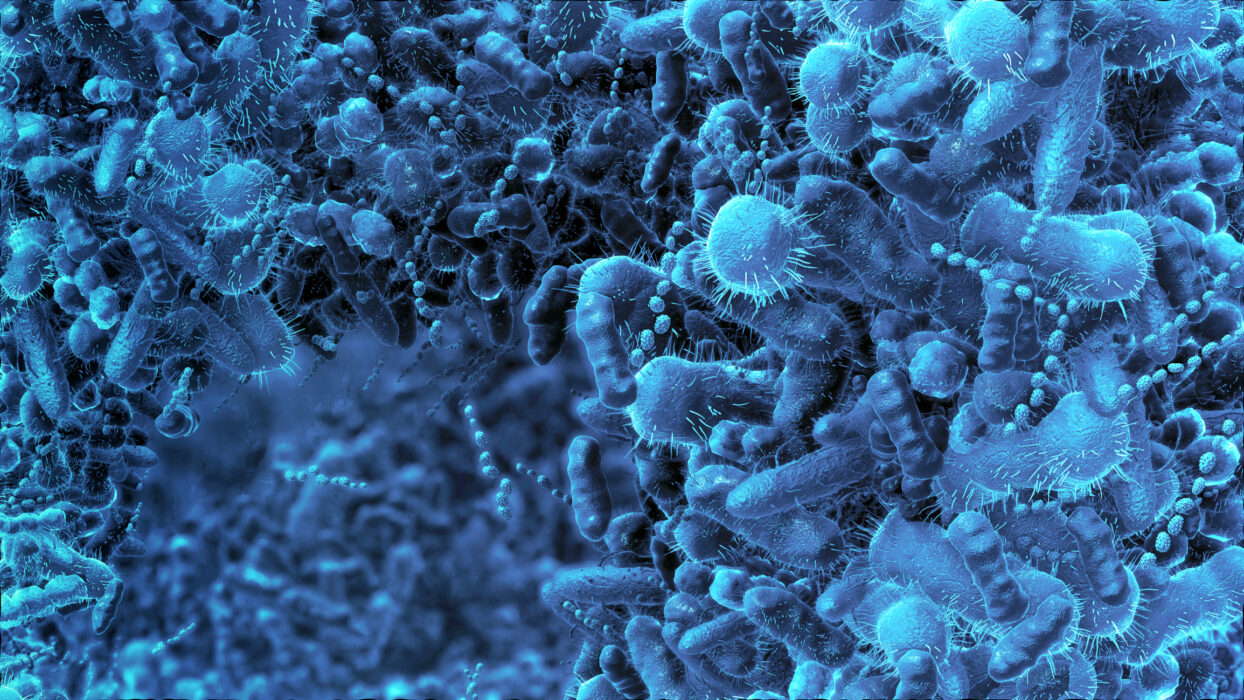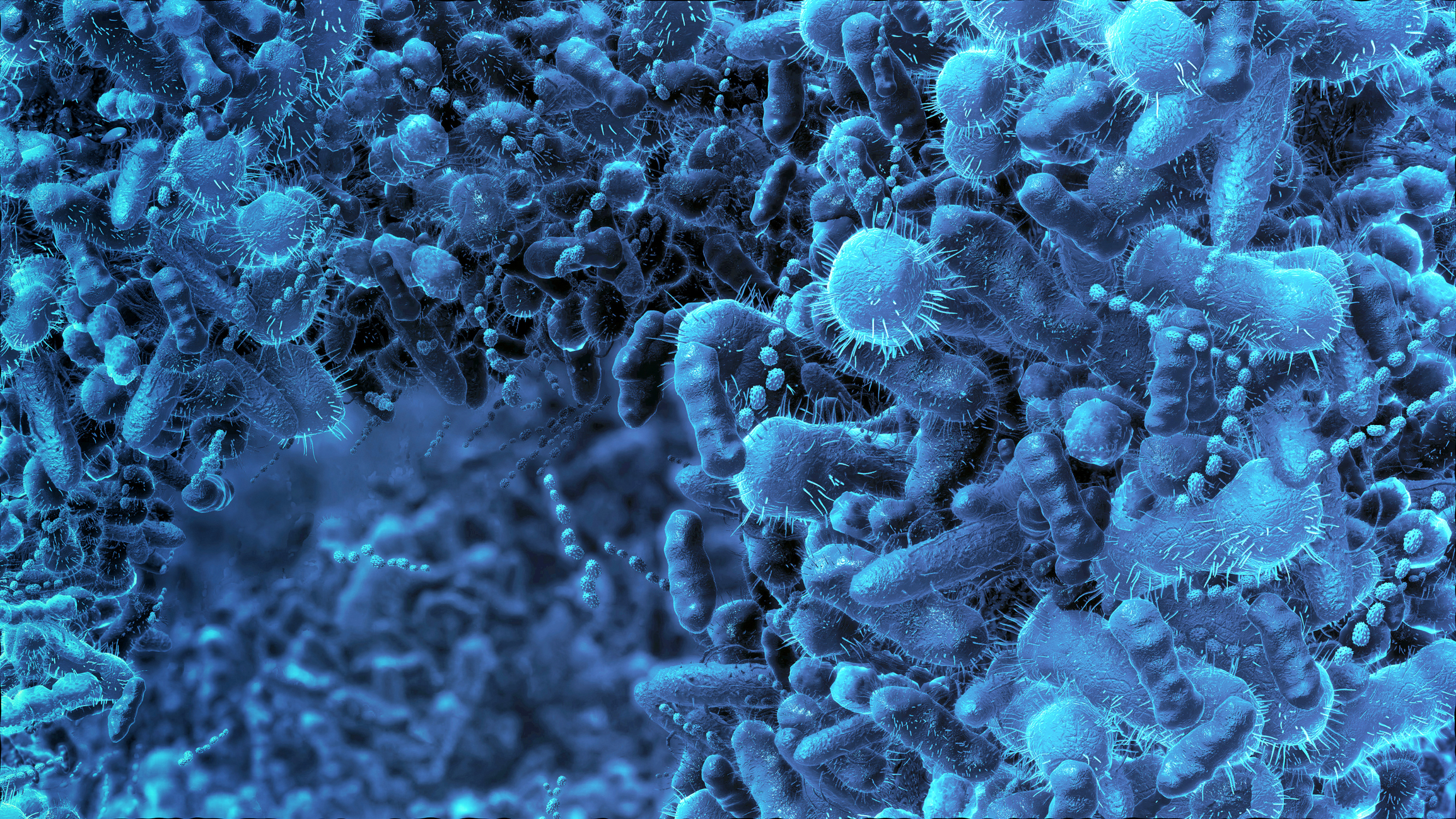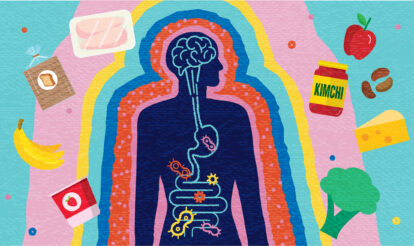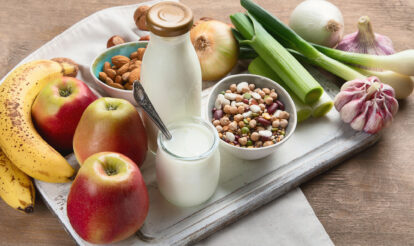
Common myths about probiotics
Common myths about probiotics

Probiotics are among the most popular health supplements available today. But myths, marketing hype, and a lack of regulations can make it difficult to choose a quality product.
Here’s a closer look at what’s fact, what’s fiction, and what really matters in a probiotic.
Myth 1: You can get enough probiotics from fermented foods
Fermented food products such as yoghurt, kombucha, and kefir are often promoted as containing “probiotic cultures” and “gut-friendly bacteria”. However, these claims are rarely – if ever – backed by clinical evidence.
Probiotics are clinically defined as “living microorganisms that, when administered in adequate amounts, confer a health benefit on the host”.[1]
Fermented foods are largely unregulated and there are no specific standards regarding the viability of their probiotic content, or whether they contain probiotics (as per their clinical definition) at all. In fact, studies show that many food products make inaccurate claims about the probiotic microorganisms they contain.[2],[3]
While fermented foods may be a valuable source of vitamins and minerals, the quantity and quality of their probiotic bacteria will not provide that of a probiotic supplement.
Myth 2: All probiotics are the same
Different probiotic species and strains have different functions, and specific strains may be used to support certain health conditions.
The most commonly used genus of probiotics in supplement products are Lactobacillus, Bifidobacterium, Bacillus, Streptococcus, Enterococcus, and yeasts such as Saccharomyces. Each of these have unique properties. For example, Lactobacilli colonize the oral cavity, gastrointestinal tract, and vagina, where they ferment refined sugars to create lactic acid.[4] L. rhamnosus HN001 and L. acidophilus GLA-14 are particularly effective in enhancing the immune system response and in treating vaginal infections.[5] Bifidobacteria colonize the colon and produce short-chain fatty acids (SCFA), an important source of energy for cells.[6] Also, Bifidobacterium longum may be helpful in relieving symptoms of irritable bowel syndrome (IBS).[7] Another genus, Streptococci, live in the oral cavity and play an important role in dental health.[8]
Myth 3: Just any probiotic supplement will do
Probiotic supplements vary significantly by quality, potency, and efficacy. The beneficial effects of one product over another depend on the strains it contains, the quantity of live bacteria in a dose, and the lack of pathogenic microorganisms. These can all be impacted by manufacturing processes, storage conditions, and the presence of other ingredients.[9]
Probiotics belonging to the group of medicinal products – such as those available from reputable brands and health practitioners – are subject to clinical trials and testing to confirm their viability, safety, and microbial content. Advanced microbiological techniques are used to identify, count, and verify the viability of probiotic bacteria.[10]
Probiotics belonging to other product groups – such as those available in supermarkets and many retail outlets – are generally not subject to this strict control, and may not be of the same quality.[11] Indeed, studies show that many low-cost probiotic products not only have lower numbers of microorganisms than stated on their labels but also may contain non-beneficial microorganisms.[12]
Myth 4: The more bacteria, the better the product
Many probiotic supplements are marketed as “high potency”, claiming they contain anything from 20 to 150 billion bacteria. However, unless the product states these are “live and active cultures” or colony-forming units (CFUs), the number may include both live and dead and damaged microorganisms.[13]
An effective probiotic should show evidence that it contains live bacterial strains that have been tested in human clinical trials, and that the bacteria will survive the passage through the gut.
The efficacy of a probiotic is more accurately determined by the diversity of strains it contains, rather than by a high concentration of a single strain. Studies show that a multistrain probiotic – one that contains several strains that work synergistically – provides more effective and more consistent benefits than a single-strain probiotic.[14]
Myth 5: Probiotics are killed off by antibiotics
Antibiotics, though effective in treating bacterial infections, also significantly deplete beneficial bacteria in the gut.[15] For many years, patients have been advised to only take probiotics after their antibiotic course was completed, lest the antibiotic destroy the probiotic bacteria. However, there is now good evidence that certain probiotic strains can survive in the presence of antibiotics, even when taken at the same time. Saccharomyces boulardii and Bifidobacterium animalis ssp. lactis BB-12® have been shown in clinical studies to survive passage through the gut during a course of antibiotics.[16],[17] In doing so, these beneficial strains help to support the balance of healthy bacteria in the gut and reduce the incidence of antibiotic-associated diarrhoea.[18],[19]
When choosing a probiotic product, check the label for its certifications of quality control and third-party testing. A reputable brand should also provide credible evidence to back up its claims and the viability of the probiotic contents.
This content is for educational purposes only and is not a substitute for health professional advice.
[1] Hill C, Guarner F, Reid G, et al. The International Scientific Association for Probiotics and Prebiotics consensus statement on the scope and appropriate use of the term probiotic. Nat Rev Gastroenterol Hepatol. 2014;11(8):506-514. doi:10.1038/nrgastro.2014.66
[2] Weese JS. Microbiologic evaluation of commercial probiotics. J Am Vet Med Assoc. 2002;220(6):794-797. doi:10.2460/javma.2002.220.794
[3] Senok AC, Ismaeel AY, Botta GA. Probiotics: facts and myths. Clin Microbiol Infect. 2005;11(12):958-966. doi:10.1111/j.1469-0691.2005.01228.x
[4] Walter J. Ecological role of lactobacilli in the gastrointestinal tract: implications for fundamental and biomedical research. Appl Environ Microbiol. 2008;74(16):4985-4996. doi:10.1128/AEM.00753-08
[5] Bertuccini L, Russo R, Iosi F, Superti F. Effects of Lactobacillus rhamnosus and Lactobacillus acidophilus on bacterial vaginal pathogens. Int J Immunopathol Pharmacol. 2017;30(2):163-167. doi:10.1177/0394632017697987
[6] Vlasova AN, Kandasamy S, Chattha KS, Rajashekara G, Saif LJ. Comparison of probiotic lactobacilli and bifidobacteria effects, immune responses and rotavirus vaccines and infection in different host species. Vet Immunol Immunopathol. 2016;172:72-84. doi:10.1016/j.vetimm.2016.01.003
[7] Zhou C, Fang X, Xu J, et al. Bifidobacterium longum alleviates irritable bowel syndrome-related visceral hypersensitivity and microbiota dysbiosis via Paneth cell regulation. Gut Microbes. 2020;12(1):1782156. doi:10.1080/19490976.2020.1782156
[8] Bloch S, Hager-Mair FF, Andrukhov O, Schäffer C. Oral streptococci: modulators of health and disease. Front Cell Infect Microbiol. 2024;14:1357631. doi:10.3389/fcimb.2024.1357631
[9] de Simone C. The unregulated probiotic market. Clin Gastroenterol Hepatol. 2019;17(5):809-817. doi:10.1016/j.cgh.2018.01.018
[10] Henderson T. Laboratory probiotic testing: ensuring quality and efficacy. Outsource! Contract Laboratory E-Magazine. Published January 16, 2025. Available from: https://outsource.contractlaboratory.com/laboratory-probiotic-testing-ensuring-quality-and-efficacy/
[11] Zawistowska-Rojek A, Zaręba T, Tyski S. Microbiological testing of probiotic preparations. Int J Environ Res Public Health. 2022;19(9):5701. doi:10.3390/ijerph19095701




